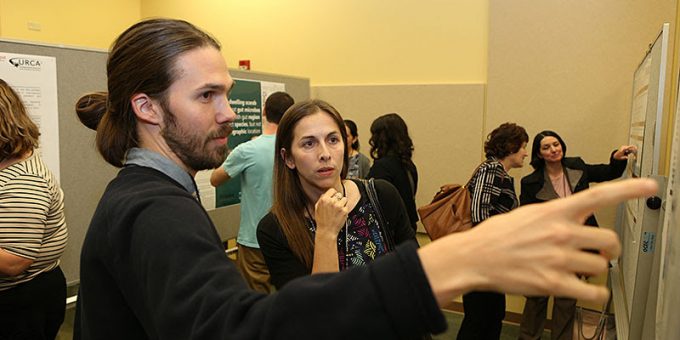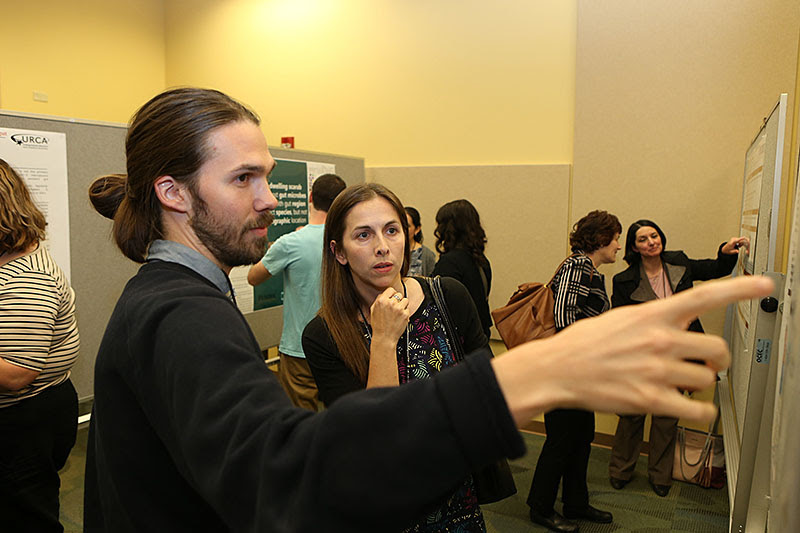
WEST LAFAYETTE – For thousands of years, humans have altered — often negatively and inadvertently —microbial communities in a quest to improve agricultural crops. In recent years, knowledge about the roles microbes play in these systems has grown rapidly but is not yet to the point at which farmers and society have reaped benefits.

That’s primed to change, according to a group of Purdue University scientists who authored a review of agricultural microbiome work for the journal Nature Plants published this week. This is the first review of agricultural microbiome research that comprehensively combines knowledge about plant, soil and insect microbiome work to develop an integrated portrait of the complex interactions that will come into play as scientists attempt to harness microbes to improve crops.
“We wanted to gather what we know about the microbiome in an agricultural context and see if that knowledge can be translated into actionable information for farmers.,” said Lizzie French, a postdoctoral researcher in entomology and lead author of the paper. “Using emerging technologies in next-generation sequencing and digital agriculture, we are beginning to integrate microbial community interactions into our understanding of agriculture as a whole ecosystem, which will enable growers to work with nature to farm more sustainably
Many decisions that have affected agriculture were made without knowledge of microbiomes or how those microbe populations would be affected. Crops bred for improved yield have lost genes that help the plants interact beneficially with microbes; pesticides can alter the abundance of beneficial insects and the microbes they carry; and monoculture or limited crop rotations can alter microbial diversity.
Other practices have improved the abundance and diversity of microbe populations, including better crop rotations and cover cropping. Biotechnology companies have developed products that can add beneficial microbes to an agricultural ecosystem, reducing the need for fertilizers and pesticides. However, more work is needed to make these products viable alternatives to traditional agricultural inputs.
“Efforts focused on improving plant growth and yields have caused us to either lose microbial species or the ability of plants to interact with some beneficial microbes,” said Laramy Enders, an assistant professor of entomology and corresponding author of the paper. “We’ve started to learn more about the interconnected nature of these microbial communities, and as we look at this from a holistic point of view, we can see opportunities to improve crops in new ways.”
The authors believe these advances are first steps to developing tools that will improve our ability to customize and shape microbiomes to boost plant defenses and yields in specific crops and in specific locations.
“We ultimately envision a decision-tree framework that will enable growers to make data-driven management decisions on the appropriate practices, cultivars and microbial inoculants to optimize the health of their crop and soil for their specific region and farming system,” they write in the Nature Plants paper. “These are exciting times for harmonizing efforts that harness the power and complexity of all interacting sectors of crop microbiomes to fuel a future of sustainable and healthy agroecosystems.”
The Purdue Applied Microbiome Sciences team has led efforts to pull together scientists to address microbiome research in an interdisciplinary way. The team’s Microbiome Symposium has brought the field’s leading experts to the West Lafayette campus to investigate ways to utilize the latest available microbiome data and technology.
Purdue’s Ian Kaplan, professor of entomology, Anjali Iyer-Pascuzzi, associate professor of botany and plant pathology, and Cindy Nakatsu, professor of agronomy, are co-authors of the paper, which was supported by Purdue Agriculture’s 2019 Elevating the Visibility of Agricultural Research: 150th Anniversary Review program.
Informatin Brian Wallheimer bwallhei@purdue.ed



